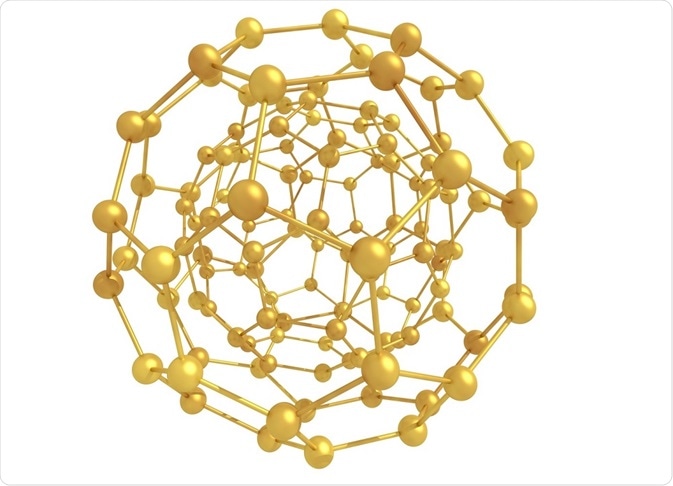Monodispersity refers to the range and variety of dimensions of nanoparticles present in a colloid. A monodisperse sample of gold nanoparticles with a radius of 5 nm will contain very few nanoparticles of any other radius, while a sample containing a wide range of sizes is said to be polydisperse.

Angel Soler Gollone | Shutterstock
Obtaining monodisperse gold nanoparticles is essential for almost all intended applications, as important properties such as catalytic activity, surface area, or surface plasmon resonance wavelength are all affected by the size and shape of the nanoparticle.
When investigating the role of gold nanoparticles, polydispersity makes correlating function and activity of nanoparticles difficult.
Most methods for producing gold nanoparticles aim to produce nanoparticles of even size and shape, with publications constantly introducing new methods or proposing minor improvements over existing methods.
Post-synthesis techniques, such as centrifugation are used to improve the monodispersity of a sample, or separate the range of shapes and sizes in a sample from one another.
Achieving monodispersity
Gold nanoparticle production can be achieved from both a ‘top-down’ and ‘bottom-up’ approach, that is, beginning from either bulk metal or molecular gold.
Bottom-up approaches tend to produce superior nanoparticles in terms of monodispersity and are more commonly employed to produce functional gold nanoparticles with an application in mind.
During the bottom-up gold nanoparticle formation, ionic gold is reduced to metallic gold in solution, forming small clusters of gold atoms. These clusters act as ‘seeds’, providing a surface on which additional gold ions are reduced to their metallic state. The nanoparticle continues to grow evenly in all directions (isotropic), until the available gold in solution has been used up.
The strength of the reducing agent determines the final size and number of particles, as a stronger reducing agent generates a greater number of seeds, meaning that the gold in solution must spread over a greater surface area and generate smaller particles.
Therefore, the initial quantities of gold and reducing agent(s) reacted must be carefully considered when aiming to produce a particular size of nanoparticle, while the growth conditions must be carefully controlled and maintained to achieve monodispersity. The reaction solution is usually stirred vigorously to ensure homogeneity, while every effort is made to heat the reaction vessel as evenly as possible.
Separation and characterization techniques
Centrifugation
Centrifugation is commonly used to wash away excess reactants or other waste from a colloidal solution of gold nanoparticles. Being much heavier than surrounding small molecules, gold nanoparticles quickly sink to the bottom of a centrifuge tube forming a pellet, and can be resuspended in the solvent of choice.
This phenomenon can be used to separate particles based on size, as larger particles will form a pellet more quickly than small particles.
Filtration techniques
Other techniques such as size exclusion chromatography, diafiltration, or dialysis can be used to separate a mixture of gold nanoparticles based on size, shape, and surface charge.
Various analytical techniques can be used to check for monodispersity in a sample, with differing levels of detail. For example, transmission electron microscopy direct photographs small number of nanoparticles, allowing for detailed information regarding the size and shape of the nanoparticles to be gained at the cost of basing data on a relatively small sample size.
Differential centrifugal sedimentation and nanoparticle tracking analysis both determine the diameter of a far larger number of particles with excellent resolution, though details, such as the exact shape of the particle are lost.
Further Reading